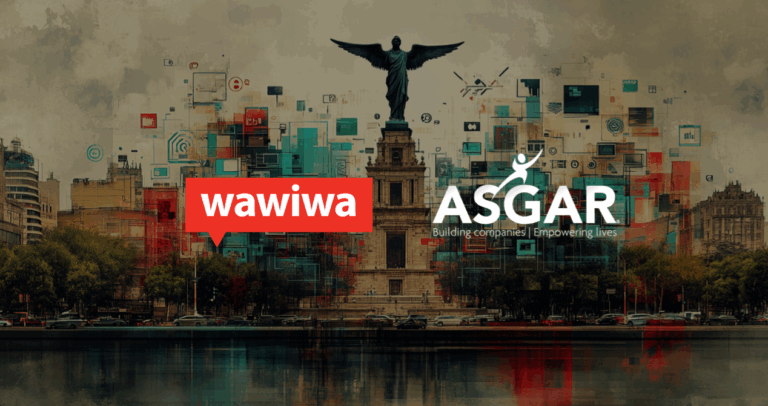Artificial Intelligence (AI) is no longer just a futuristic concept; it’s rapidly becoming an integral part of the workplace. Building on research from Microsoft and LinkedIn identifying current labor and hiring trends, this blog explores how employees are leading the charge in AI adoption, the challenges faced by leaders in quantifying AI’s productivity gains, and the risks and rewards of this grassroots movement.
The Microsoft Work Trend Index survey, conducted by Edelman Data & Intelligence, gathered insights from 31,000 full-time employed or self-employed knowledge workers across 31 markets between February 15, 2024, and March 28, 2024. The aggregated results, published on May 8, 2024, provide a comprehensive view of AI adoption and its impact on the global workforce.
Employees Demand AI at Work—and They’re Not Waiting
Employees are quickly integrating AI into their work routines, with 75% of knowledge workers now using AI tools, and nearly half adopting these tools since November 2023. This proactive approach is driven by Generative AI’s impressive benefits, such as saving time, enhancing focus, boosting creativity, and increasing job satisfaction. For instance, employees use tools like ChatGPT to write content and ask questions about almost everything, and Dall-E to generate images from text. As employees recognize the advantages of using Gen AI, they’re increasingly taking the initiative to leverage AI independently, highlighting a significant shift in workplace dynamics.
Despite the enthusiasm from employees, many leaders remain hesitant to fully embrace AI. This is primarily due to concerns about quantifying its productivity gains. This reluctance has resulted in a lack of clear vision and strategy for AI implementation. 79% of leaders agree on the necessity of AI for competitiveness, yet 59% worry about measuring its impact, and therefore there’s a noticeable gap between acknowledgement and action. This disconnect is stalling comprehensive AI adoption, leaving employees to navigate AI integration on their own.
Without official guidance, 78% of employees are bringing their own AI tools to work, a practice prevalent across all generations and company sizes. While this demonstrates a strong demand for AI, it also introduces risks, particularly around data privacy and security. Leaders need to channel this grassroots momentum into structured, secure AI strategies that align with company goals. By developing clear AI policies and providing the necessary support, companies can harness the full potential of AI while mitigating associated risks.
AI is Raising the Bar in the Job Market and Breaking Career Ceilings
AI is making significant waves in the job market, offering both challenges and opportunities. While some worry about job losses due to AI, the reality is more nuanced. Many leaders are actively seeking talent with AI skills, especially in fields like cybersecurity, engineering, marketing, and creative design. This demand for AI proficiency is creating a hidden talent shortage, offering a golden opportunity for those willing to upskill.
Interestingly, the job market is buzzing with activity. Nearly half of the professionals are considering a career change this year. The rise in job applications shows that professionals are eager to leverage AI skills to advance their careers. Leaders are increasingly favoring candidates with AI aptitude over more experienced ones without these skills. This shift gives junior candidates a surprising edge, as AI tools like OpenAI’s ChatGPT and Microsoft’s Copilot become indispensable in the workplace.
Despite the focus on hiring new AI talent, many companies are not investing enough in training their current employees. This oversight is evident as only a small percentage of employees receive AI training from their employers. While companies hesitate, employees are taking matters into their own hands by upskilling independently.
The Rise of the AI-Power User
“AI power-users” are employees who are transforming the workplace with their extensive use of AI tools. These individuals save time, enhance creativity, and stay focused on key tasks, making their workloads more manageable. By frequently experimenting with AI and refining their prompts, AI power-users develop effective habits that set them apart from casual users. They often start and end their day with AI, incorporating it into their workflow.
Interestingly, AI power-users don’t just improve their own efficiency; they reshape entire business processes. They utilize AI to catch up on meetings, analyze data, design content, and interact with customers. Picture this: while you’re debating whether AI can help you with a task, an AI power-user has already asked AI to draft emails, create visuals, and even suggest lunch options! Their innovative approach is supported by leaders who promote AI use, fostering a culture of continuous learning and adaptability.
Organizations that nurture AI power-users benefit from a forward-thinking culture. These companies encourage experimentation with AI and provide tailored training, enabling employees to harness AI’s full potential. As a result, AI power-users boost their own productivity and drive transformative changes within their organizations. The partnership between AI and human ingenuity hints at a future where AI is an integral part of everyday work life.
Channeling AI Enthusiasm into Business Transformation
To harness AI’s potential, start by identifying specific business problems where AI can make a significant impact. This targeted approach ensures that AI applications are directly aligned with business goals, driving efficiency and innovation.
Effective AI integration requires both a top-down and a bottom-up approach. This means involving everyone from the CEO to entry-level employees in the AI adoption process. Business line leaders should activate and motivate their teams to embrace AI. For instance, Microsoft’s rollout of Copilot relied on internal champions at all levels to model and spread AI enthusiasm. This engagement ensures that AI initiatives are well-supported and effectively implemented across the organization.
Training is crucial for turning employees into AI power-users. Continuous learning ensures that employees are equipped to utilize AI tools effectively, fostering a culture of innovation and enabling the organization to reap the full benefits of AI integration.
To effectively foster a culture of AI enthusiasm and innovation, leaders should create a supportive environment that encourages experimentation and collaboration. Providing regular training sessions, celebrating AI success stories within the company, and offering incentives for innovative uses of AI can motivate employees to embrace these tools. By recognizing and rewarding AI-driven achievements, leaders can inspire their teams to explore new possibilities, ultimately driving the organization toward greater efficiency and creativity.
Upskilling for the AI Era: Wawiwa’s Innovative Tech Programs
As AI transforms industries, the demand for skilled professionals is skyrocketing. Wawiwa is a global tech education provider and addresses this need by offering specialized AI Upskilling Courses.
For example:
- Generative AI for Marketing Professionals is a 15-hour workshop that transforms participants into versatile marketers capable of producing top-tier marketing strategies, content, and designs, easily and in-house.
- Wawiwa also offers a 16-hour Generative AI for Developers upskilling course. Participants learn to understand and implement AI and Machine Learning concepts, create real-world applications with tools like OpenAI and Hugging Face, and develop Generative AI models for various coding tasks.
- Another course, Practical Machine Learning with Python, is an 8-hour seminar where participants gain skills in using Python libraries such as Numpy for numerical computations, Pandas for data manipulation, and Matplotlib/Seaborn for data visualization. They also learn to implement classification and regression models to solve complex problems, providing a comprehensive understanding of machine learning.
- Wawiwa has also integrated AI modules into all of its reskilling programs, such as Data Analyst and Full-Stack Developer Programs. These modules provide participants with the knowledge and skills needed to apply AI in various aspects of their roles, ensuring they can adapt to the rapidly changing technological landscape.



